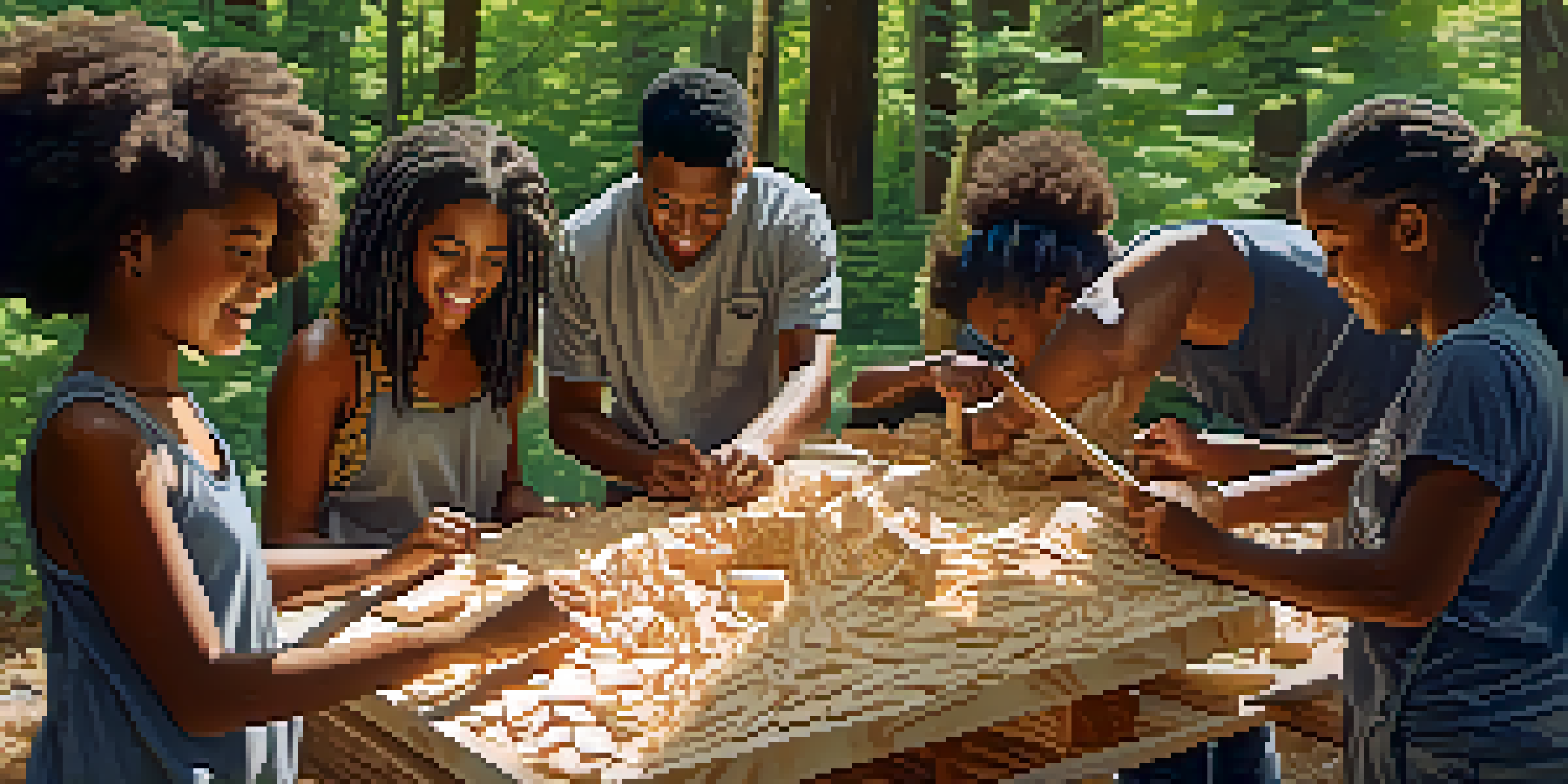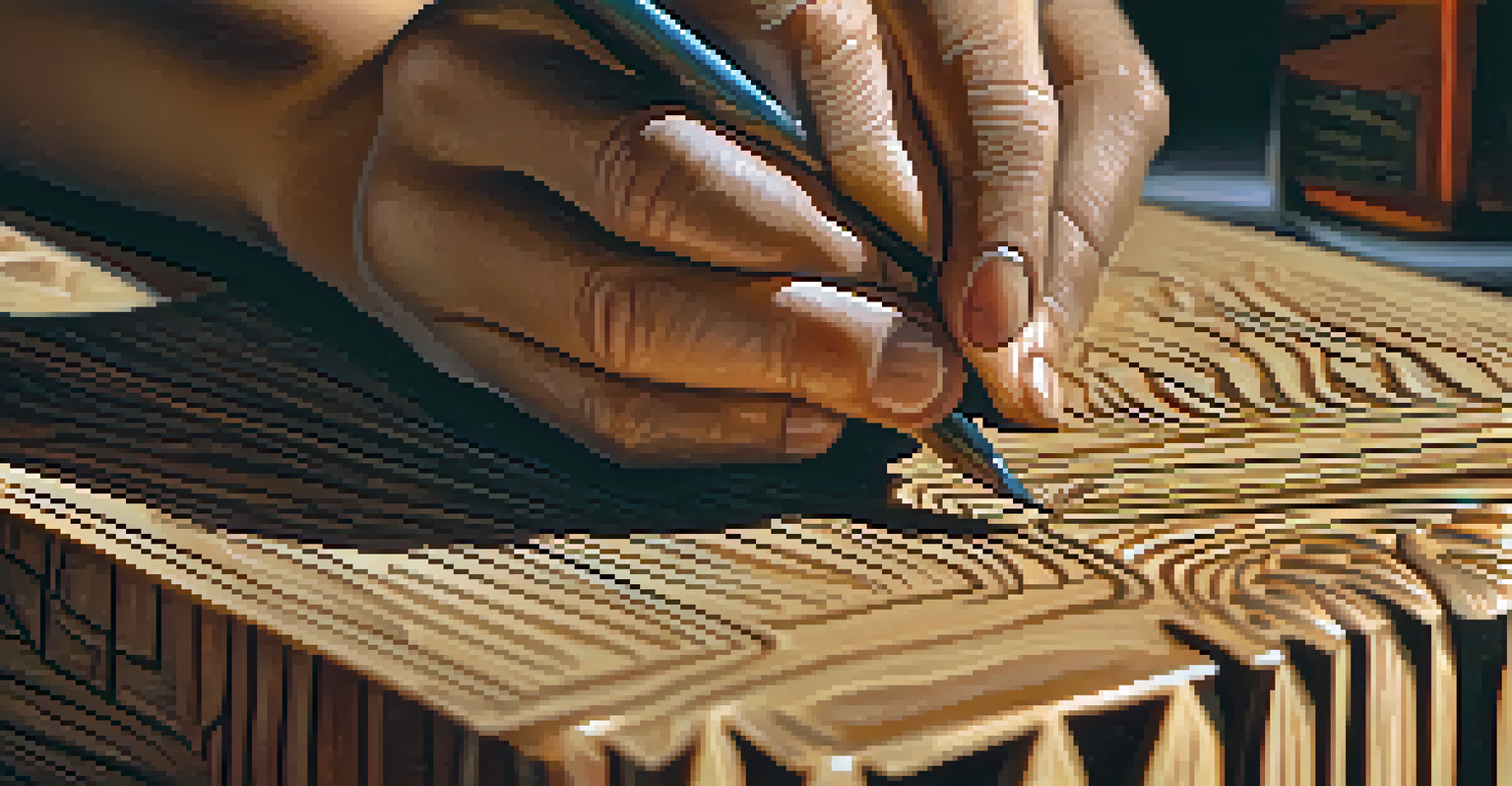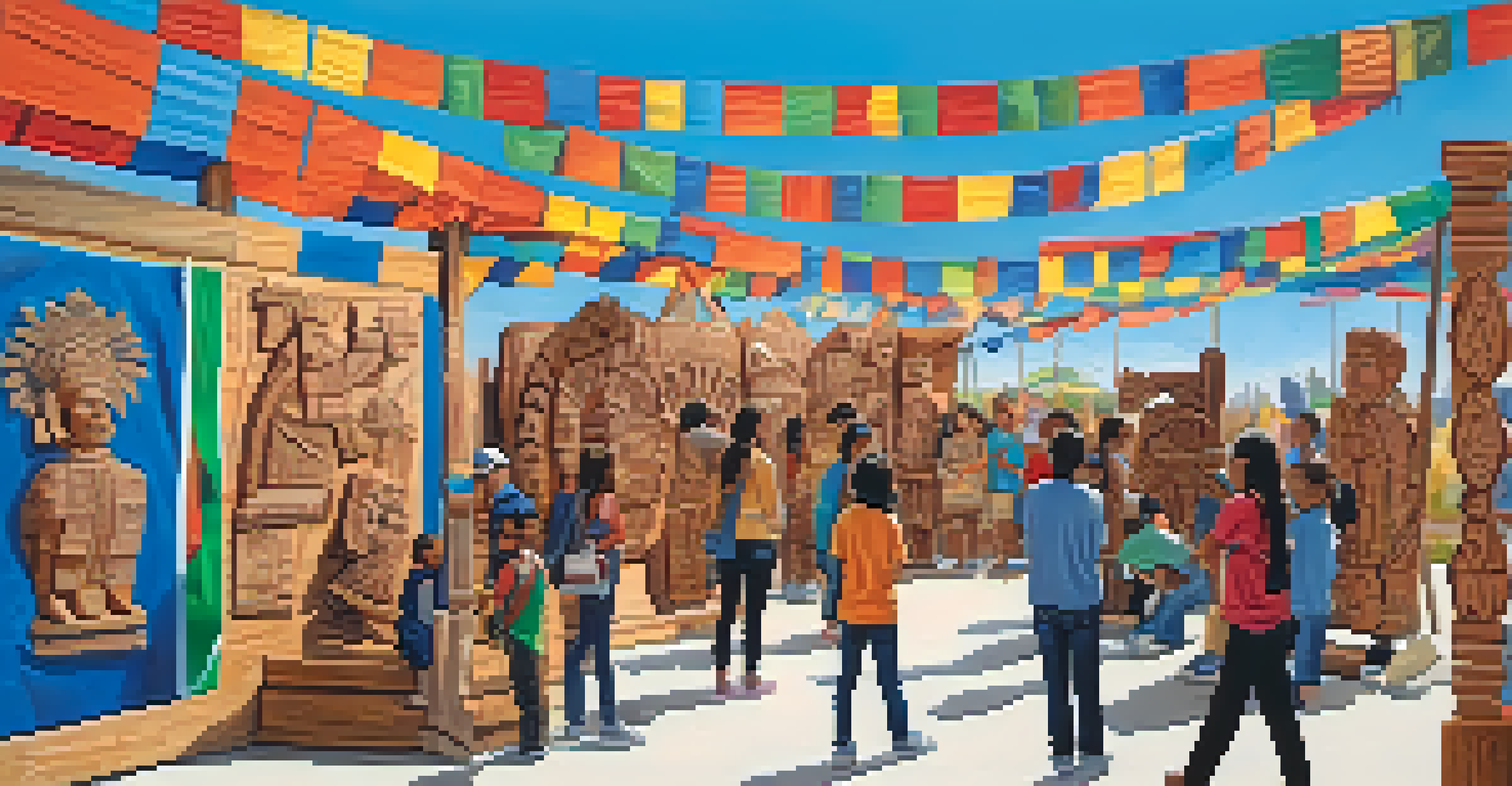Engaging Youth through Carving: A Path to Community Pride

The Art of Carving: A Timeless Skill for Youth
Carving, an age-old craft, offers youth a creative outlet that connects them to their heritage. It's not just about shaping wood or stone; it's about expressing individuality and embracing tradition. This hands-on skill encourages young people to think critically and develop patience as they bring their visions to life.
Art is not freedom from discipline, but disciplined freedom.
As they carve, youth learn the importance of craftsmanship and attention to detail. Each stroke of the tool becomes a lesson in perseverance, illustrating that mastery takes time and effort. In a world dominated by screens, carving provides a refreshing break, enabling them to engage in a tactile and rewarding experience.
Moreover, carving can serve as a bridge between generations. When youth learn from elders, they not only acquire a skill but also foster relationships that deepen community ties. This shared experience creates a sense of belonging and pride, making them feel more connected to their roots.
Building Community Through Collaborative Carving Projects
Community carving projects are fantastic opportunities for youth to collaborate and bond. These initiatives can take many forms, from local art installations to community festivals showcasing their work. Engaging in such projects cultivates teamwork and helps young people learn the value of working together towards a common goal.

Participating in these projects allows youth to express their creativity while also contributing to the community's aesthetic. The finished pieces often become symbols of local pride, showcasing the unique stories and cultures of the area. This not only beautifies the surroundings but also instills a sense of ownership and pride among the participants.
Carving Builds Community Connections
Collaborative carving projects unite youth, fostering teamwork and a sense of belonging within their communities.
Additionally, these projects can draw in local audiences, fostering a sense of unity. When community members come together to support and appreciate the young artists, it reinforces the importance of collaboration. This shared experience helps to create lasting connections that benefit both the youth and the community.
Carving as a Tool for Cultural Expression and Identity
For many young people, carving goes beyond just a hobby; it is a means of cultural expression. Through their creations, they can tell their own stories and represent their cultural backgrounds. This not only helps them explore their identities but also educates others about their heritage.
Creativity takes courage.
By incorporating traditional designs and techniques, youth can keep cultural practices alive. This preservation of history through carving allows them to connect with their ancestors while adapting these traditions for a modern audience. It becomes a powerful way to celebrate diversity and promote understanding within the community.
Furthermore, cultural carving workshops can invite participants from different backgrounds to share their unique styles. This exchange of ideas fosters respect and appreciation for various cultures, enhancing community pride. As youth engage with diverse perspectives, they become ambassadors of unity and understanding.
Encouraging Environmental Awareness through Carving
Carving can also promote environmental awareness among youth, especially when using sustainable materials. By choosing locally sourced wood or eco-friendly alternatives, young carvers learn the importance of sustainability and conservation. This hands-on approach encourages them to think critically about their impact on the environment.
Workshops focused on eco-friendly carving practices can teach youth about responsible sourcing and waste reduction. Not only does this instill a sense of environmental stewardship, but it also empowers them to make informed choices in their crafting. Each carving becomes a statement about their commitment to protecting the planet.
Carving Preserves Cultural Heritage
Through traditional designs and techniques, carving allows youth to express their identities and celebrate their cultural backgrounds.
Additionally, community art projects can highlight environmental themes, using carving as a medium to raise awareness. By creating pieces that reflect local ecosystems or endangered species, youth can engage their peers in important conversations about conservation. This blend of artistry and activism creates a meaningful platform for change.
The Role of Mentorship in Youth Carving Programs
Mentorship plays a crucial role in youth carving programs, providing guidance and support as they develop their skills. Experienced carvers can share valuable insights and techniques, helping young artists overcome challenges. This relationship fosters a sense of belonging and encourages youth to pursue their passion with confidence.
Mentors also serve as role models, showcasing the positive impact of carving on their own lives. By sharing their journeys and experiences, they inspire youth to envision a future where they can use their skills for personal and community growth. This connection can motivate young people to explore their potential beyond the craft.
Moreover, mentorship can extend beyond technical skills, teaching important life lessons about patience, resilience, and collaboration. As youth navigate their creative journeys, these lessons equip them with tools they can apply in all aspects of life. In this way, carving becomes not just an art form but a pathway to personal development.
Fostering Pride through Local Art Shows and Exhibitions
Local art shows and exhibitions provide an excellent platform for youth to showcase their carving talents. These events create an opportunity for young artists to gain recognition and celebrate their hard work. The excitement of displaying their creations in front of family and community members boosts their confidence and fosters a sense of pride.
When youth see their work appreciated, they feel validated, which can inspire them to continue honing their skills. Exhibitions also encourage healthy competition, pushing them to strive for improvement and innovation. This environment of encouragement nurtures their creativity and growth as artists.
Mentorship Empowers Young Artists
Experienced mentors guide youth in carving, helping them build skills and confidence while imparting valuable life lessons.
Furthermore, local exhibitions can attract community support, fostering a culture of appreciation for the arts. When community members engage with youth artists, it strengthens the bond between generations and promotes a shared pride in local talent. The ripple effect of this support can lead to more opportunities for young carvers in the future.
The Future of Carving: Engaging Youth for Generations to Come
As we look to the future, engaging youth in carving remains vital for preserving this craft. By introducing innovative techniques and modern materials, we can keep the interest alive among younger generations. Emphasizing the relevance of carving in contemporary society will ensure its continued growth and evolution.
Integrating technology, such as digital design and woodworking tools, can also appeal to tech-savvy youth. This combination of tradition and innovation can attract a diverse audience, expanding the reach of carving programs. By adapting to changing interests, we can cultivate a new generation of passionate carvers.

Ultimately, the goal is to instill a sense of pride in youth, empowering them to carry the art of carving forward. By fostering their love for this craft, we can ensure that carving remains a cherished part of our community's cultural heritage for years to come. Engaging youth today paves the way for a vibrant future in carving.